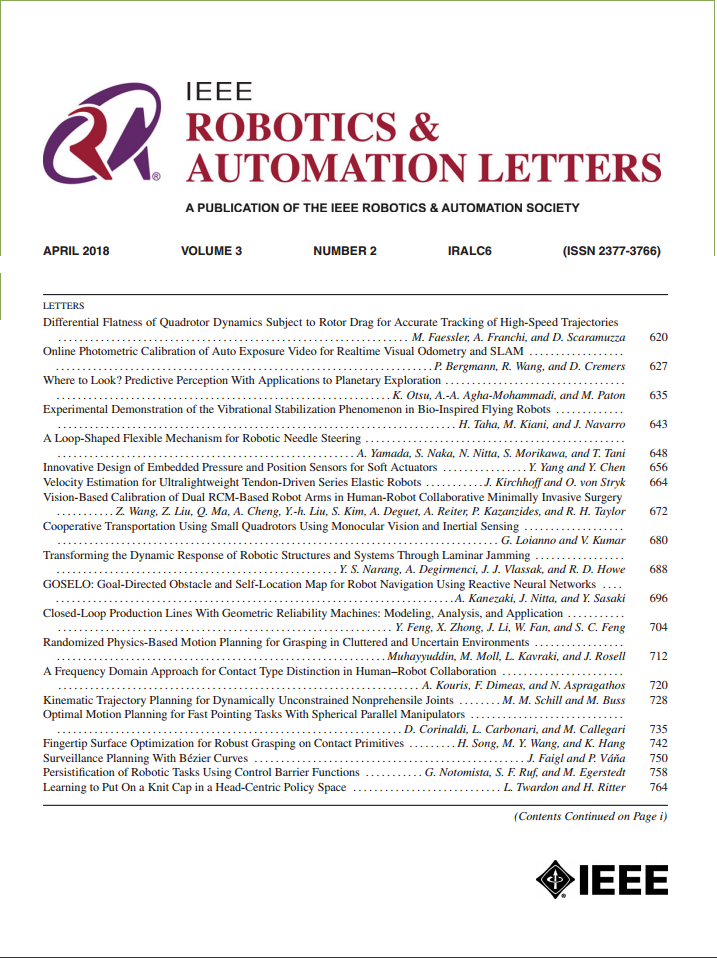The Only Way Is Up: Active Knee Exoskeleton Reduces Muscular Effort in Quadriceps During Weighted Stair Ascent
IF 4.6
2区 计算机科学
Q2 ROBOTICS
引用次数: 0
Abstract
Firefighters consistently rank stair ascent with gear, which can weigh over 35 kg, as their most demanding activity. Weighted stair climbing requires dynamic motions and large knee torques, which can cause exhaustion in the short term, and overuse injuries in the long term. An active knee exoskeleton could potentially alleviate the burden on the wearer by injecting positive energy at key phases of the gait cycle. Similar devices have reduced the metabolic cost for various locomotion activities in previous studies. However, no information is available on the effect of active knee exoskeletons on muscular effort during prolonged weighted stair ascent. Here we show that our knee exoskeletons reduce the net muscular effort in the lower limbs when ascending several flights of stairs while wearing additional weight. In a task analogous to part of the physical fitness test for firefighters in the US, eight participants climbed stairs for three minutes at a constant pace while wearing a 9.1 kg vest. We compared lower limb muscle activation required to perform the task with and without two bilaterally worn Utah Knee Exoskeletons. We found that bilateral knee assistance reduced average peak quadriceps muscle activation measured through surface electromyography by 32% while reducing overall muscle activity at the quadriceps by 29%. These results suggest that an active knee exoskeleton can lower the overall muscular effort required to ascend stairs while weighted. In turn, this could aid firefighters by preserving energy for fighting fires and reducing overexertion injuries.求助全文
约1分钟内获得全文
求助全文
来源期刊

IEEE Robotics and Automation Letters
Computer Science-Computer Science Applications
CiteScore
9.60
自引率
15.40%
发文量
1428
期刊介绍:
The scope of this journal is to publish peer-reviewed articles that provide a timely and concise account of innovative research ideas and application results, reporting significant theoretical findings and application case studies in areas of robotics and automation.
 求助内容:
求助内容: 应助结果提醒方式:
应助结果提醒方式:


